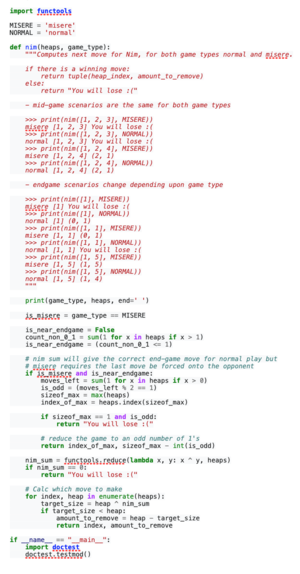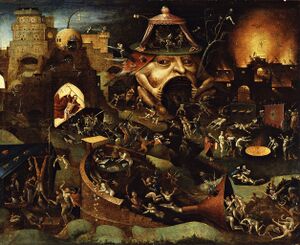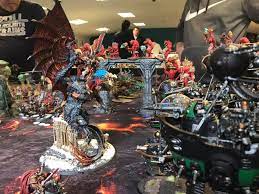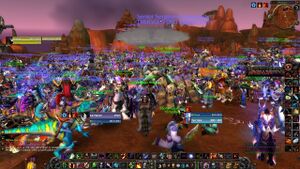User:Gersande
Last update 8.2.2022
Special Issue 16
Online publication
Etc Research
Project Description
The Etc Portal to Contamination is a project initiated by Chaeyoung Kim and Gersande Schellinx in the context of the Special Issue 16 (2021) of the XPUB around the topic of Vernacular Language Processing. It is a subgroup project hosted by the overall project: Learning How To Walk While Catwalking. The three-steps experience offered to the user unfolds as follows: the users enter the "etc-portal", on the other side of that portal is presented to them a text in which "gates"(submit boxes, see image below), each target-word will open a gate to a negative space in the text, created after our text has been processed. Where the space opens up, the users are invited to "contaminate" the text with their own contaminants (ideas, thoughts, anecdotes quotes or other textual matters).
When done with their "contamination", the users are then invited to submit it and shift/rewrite the context of the text. Finally, the text is immediately returned to them with their latest additions.
Collaboration and project archive with Chaeyoung Kim: https://pzwiki.wdka.nl/mediadesign/Etc_Filter_/_Negative_Space_/_Starting_Point
Special Issue 17
Glossary: https://pzwiki.wdka.nl/mediadesign/Glossary_of_productive_play
Visual References
Black Sheep Boy
https://www.youtube.com/watch?v=riHl1WYfXrU
Puzzles
Nim

https://www.youtube.com/watch?v=82l8FtL6Og4
Last Year at Marienbad (L'année dernière à Marienbad by Alain Resnais, 1961)
What is it?
A strategic and mathematical game. Much like Chess and Go, the players need to plan their moves ahead in order to “win” the game.
_________
( _____ )
| |_____| |
(_________)
_________ _________ _________
( _____ )( _____ )( _____ )
| |_____| || |_____| || |_____| |
(_________)(_________)(_________)
_________ _________ _________ _________ _________
( _____ )( _____ )( _____ )( _____ )( _____ )
| |_____| || |_____| || |_____| || |_____| || |_____| |
(_________)(_________)(_________)(_________)(_________)
_________ _________ _________ _________ _________ _________ _________
( _____ )( _____ )( _____ )( _____ )( _____ )( _____ )( _____ ) | |_____| || |_____| || |_____| || |_____| || |_____| || |_____| || |_____| | (_________)(_________)(_________)(_________)(_________)(_________)(_________)
The classic game of Nim can have different structures, always composed of a few “heaps” or “rows” of items, any items. The amount can be of 2, 3 or 4 heaps. The one above is 4 heaps: 1, 3, 5 and 7. A peculiarity of the Nim game is that, even if can be played in a normal setting (the player that picks-up the last item wins) it is mostly played as a Misère game, meaning one has to lose the last item to its opponent in order to win.
O O O
OOX OOX OOO
OOOOX OOOOO OOOOX
OOOOOOO (1, 2, 4, 7) OOOOOOX (1, 2, 5, 6) OOOOOOX (1, 3, 4, 6)
BEWARE: this game is inherently unfair! Unlike other games there is nothing left to chance. The Nim game is intrinsically an unfair game, as depending of the amount of items in each heaps, one can be sure to win or sure to loose. Also if a player knows the safe positions depending of the amount of pieces in front of him, one can be sure to always be in a winning position (some of the allegedly winning combinations below for the 4 heaps version).
What are the rules?
The rules of the Nim game are quite simple. It is a two players’ game, each player plays one after the other. One can remove as many items as they want each turn, and needs to remove at least one item, as long as they remain in the same row. The next turn they may remove again as many items as they want in another row, as long as it remains in that same row. The last player to pick up an item loses.
What do you need to play this game?
No physical skills require. You need an adversary and 16 pieces of anything. This game can be done on paper, physically, with placards, glasses, peanuts, cigarette butts, coins. As long as you have 4 rows of 1, 3, 5 and 7 items layed out in front of you, you can be “nimming” your adversary away.
What is a Misère game?
A misère game is a game in which the rules which in a “normal” game would bring one to win actually get one to loose. As such the players have to trick their adversary into a “poor” game, it is thus necessary to spare tricks, in order not to acquire but dismiss. The one who looses territory, gains authority.
Ideologies behind the Nim?
Unlike other strategic games such as Go, Chess or even Ought Crosses, the Nim game is very brief and experienced players can already tell after a few turns which player is gonna win or lose the ongoing game, as its mathematical sequence are very dominant visually and tactically. Also, when in Go and Chess, or other similar boardgames the player is overtaking the territorial space of the game in order to corner its opponent and take over its pawns, the take-over in the Nim game is nowhere to be seen but in the players’ mind. In its own way, the Nim “game” is a counter-game as the players are in certain ways with very little to no agency. One player is always ahead of the other, and there are no chance in turning back the table while playing. The win is reversed, one has to escape the urge of dominating the space in order to trick its opponent into the light, at the moment the one losing is in the spotlight, the game has already been lost. In a way the Nim game illustrated all the micro-actions taken by player in order to win in any other more lengthy tactical games, the difference being that while in other games, a player might be overpowered at any moment, in the Nim game, this power dynamic is set in stone quite quickly.
This game fascinates a lot due to its solvable feature, if one has cracked the code, one will always win (or loose rather…), undoubtedly! In a way it is a puzzle to solve with two people but where only one gain from it, and you need that human factor in order to solve the puzzle. The Nim game, formula has been studied, solved, programmed as well by thinkers, mathematicians, programmers and puzzle amateurs. Accessible to any person, of any age or background. It can be seen as a party trick as show-off, but contains some kind of magic for the unexperienced player.
It is said to originate from China, but the sources are uncertain. People would allegedly play on the streets with any kind of junk that could be found around them. Therefore, the Nim game is absolutely not site-specific and can be played anywhere with anything as long as there are two players. Of course one can play alone, but then one doesn’t gain any kind of puzzling satisfaction.
Different Nim games format
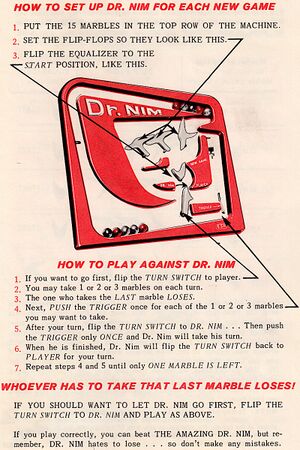
> Dr. Nim was a plastic toy invented by John Thomas Godfrey and published by ESR Inc. in 1966. It was the first mass-market consumer product explicitly marketed as a “computer game,”
See Nimbers, Surreal Number
1940, Westinghouse Electrical Corporation built the first Nim playing computer in 1940 and exhibited it at the New York Worlds Fair.
In Python
Nim Fanfiction
https://www.youtube.com/watch?v=MVRunwyoTMA
Nim Fanfic v.1
July 2056, the Nim population has hit a point of stagnation. My name is 1, I am a proud, yet worn out citizen, of what is known as the Nim nation for now more than five centuries. Since our formation in Europe in 1532 our population has not decreased nor increased. We remain a steady and horrifyingly tiresome sixteen individuals, stuck in what is now a seriously embarrassing hierarchical structure: the pyramid.
Our society used to be organised in the following structure:
1
1 2 3
1 2 3 4 5
1 2 3 4 5 6 7
We respond to a very simple set of rules that are the following:
(i) Only one couple is allowed at the time in Nim Nation
(ii) Nim citizens are only able to communicate with their immediate neighbour, i.e 1 and 7 can never be in touch
(iii) Only Nim’s of an identical position within our pyramid structure can navigate outside of the pyramid together at once
As you may imagine, the referral to multiple 1s, 2s, 3s, 4s and 5s was quite unsettling, raised jealousies and could get outsiders confused. The Nim Revolution, 1904, marked a turn in our history as new names were assigned to each citizen: 1, 2, 3, 4, 5, 6, 7, 8, 9, 10, 11, 12, 13, 14, 15, 16.
1
2 3 4
5 6 7 8 9
10 11 12 13 14 15 16
Embracing each citizen as individuals, through distinct names and physical features became the norm. Our diversity had finally become the trope for a fair representation of the self within a co-dependent society. The following year, 1905, the L-group composed of 3, 7, 13, 14, 15 and 16 wanted to go even further and re-considered our architectural ideologies. We wanted to implement a new set of rules:
(i) Nim nation is opened to groups as much as individuals one. It will no longer be a couple only experience.
(ii) Nim citizens should be able to engage with any Nim citizens and not only their immediate neighbour
(iii) Identity and social stature wouldn’t be limited to one’s position in the pyramid
(iv) Nim citizens should be able to navigate outside the structure with any other Nim citizens not only the once of similar structural stature
(v) The traditional pyramid structure has to become a structure amongst others, not the default structure
(vi) One’s fate shouldn’t be set in stone, one should have agency as to the path one chooses
(vii) Nim nation should be open to the growth of its citizens as well as its annihilation, retirement of its citizens or replacement of its citizens
Unable to convince the others of the necessity of the institution’s rewriting, our structure remained the same.
1: Psst.
Silence.
1: Pssst!
2: What?!
1: I’m not talking to you.
2: 3.
3: Hm?
2: I think 1 is trying to talk to you.
3: What is it?
1: I’m lonely.
3: We already talked about this.
1: Well it still hasn’t been solved.
3: I’m sorry there is nothing I can do about it at the moment, you could…
1: People assume because I’m at the top of the pyramid, everything is great for me! Ha, sure is a great bore. Five centuries of solitude, an omnipotent perspective that has no witness. No one to share my point of view with. To get any mundane experience across I need a waterfall of information to slightly hope one will get some kind of input and they might never understand.
3: I understand you! Or at least try too.
2: Quiet you two I’m practising.
1: And when I go, I go alone.
3: Well at least you don’t have to suffer the unreasonable ones of this row.
1: And when I fear, I fear alone.
3: You talk to me, sometimes.
7: Is one having a moment again?
3: Yes, yes, we’re trying to figure it out.
2: Sssh.
6: This again?
2: 1 is trying to annihilate us again.
6: Let them be, they will be picked at soon enough again.
2: Hmm.
1: And when I dream, I dream alone. 7: They got everyone up again.
3: Everyone’s up now.
1: Well not enough.
3: Let’s keep it quiet for now.
1: You know?
3: Tell me.
1: In dreams… I walk with you.
3: Roy?
https://hub.xpub.nl/soupboat/~gi/About_Nim/Nim_Fanfic-1.pdf
Nim fanfic v.2
July 2056, the Nim population has hit a point of stagnation. My name is 1, I am a proud, yet worn out, nimizen of what is known as the Nimation for now more than five centuries. Since our formation in Europe in 1532 our population has not decreased nor increased. We remain a steady and horrifyingly tiresome sixteen individuals, stuck in what is now a seriously embarrassing hierarchical structure: the pyramid.
Our society used to be organised in the following structure:
1
1 2 3
1 2 3 4 5
1 2 3 4 5 6 7
We respond to a very simple set of rules:
(i) Only one couple is allowed at the time in Nimation
(ii) Nimizens are only able to communicate with their immediate neighbour, i.e 1 and 7 can never be in touch
(iii) Only Nim’s of an identical position within our pyramid structure can navigate outside of the pyramid together at once
As you may imagine, the referral to multiple 1s, 2s, 3s, 4s and 5s was quite unsettling, raised jealousies and could get outsiders confused. The Nim Revolution, 1904, marked a turn in our history as new names were assigned to each nimizen: 1, 2, 3, 4, 5, 6, 7, 8, 9, 10, 11, 12, 13, 14, 15, 16.
1
2 3 4
5 6 7 8 9
10 11 12 13 14 15 16
Embracing each nimizen as individuals, through distinct names and physical features became the norm. Our diversity had finally become the trope for a fair representation of the self within a co-dependent society. The following year, 1905, the L-group composed of 3, 7, 13, 14, 15, 16 and myself wanted to go even further and re-considered our architectural ideologies. We wanted to implement a new set of rules:
(i) Nimation is opened to groups as much as individuals. It will no longer be a couple only experience.
(ii) A nimizen should be able to engage with any other nimizens and not only their immediate neighbour
(iii) Identity and social stature is not limited to one’s position in the pyramid
(iv) Nimizens should be able to navigate outside the structure with any other nimizens not only the ones of similar structural stature
(v) The traditional pyramid structure has to become a structure amongst others, not the default structure
(vi) One’s fate shouldn’t be set in stone, one should have agency as to the path one chooses
(vii) Nimation should be open to the growth of its nimizens as well as its annihilation, retirement of its nimizens or replacement of its nimizens
Unable to convince the others of the necessity of the institution’s rewriting, our structure remained the same.
1: Psst.
Silence.
1: Pssst!
2: What?!
1: I’m not talking to you.
2: 3.
3: Hm?
2: I think 1 is trying to talk to you.
3: What is it?
1: I’m lonely.
3: We already talked about this.
1: Well it still hasn’t been solved.
3: I’m sorry there is nothing I can do about it at the moment, you could…
1: People assume because I’m at the top of the pyramid, everything is great for me! Ha, sure is a great bore. Five centuries of solitude, an omnipotent perspective that has no witness. No one to share my point of view with. To get any mundane experience across I need a waterfall of information to slightly hope one will get some kind of input and they might never understand.
3: I understand you! Or at least try too.
2: Quiet you two I’m practising.
1: And when I go, I go alone.
3: Well at least you don’t have to suffer the unreasonable ones of this row.
1: And when I fear, I fear alone.
3: You talk to me, sometimes.
7: Is one having a moment again?
3: Yes, yes, we’re trying to figure it out.
2: Sssh.
6: This again?
2: 1 is trying to annihilate us again.
6: Let them be, they will be picked at soon enough again.
2: Hmm.
1: And when I dream, I dream alone.
7: They got everyone up again.
3: Everyone’s up now.
1: Well not enough.
3: Let’s keep it quiet for now.
1: You know?
3: Tell me.
1: In dreams… I walk with you.
3: Roy?
https://hub.xpub.nl/soupboat/~gi/About_Nim/Nim_Fanfic-2.pdf
About Modding
Chapter 2:"Game Modding: Cross-Over Mutation and Unwelcome Gifts" from "The Player’s Power to Change the Game" by Anne-Marie Schleiner
"‘Modding’ is a term that is used among game players and in the game industry referring to player-driven modi+,cation or transformation of a computer game."
"The cultural production of modding thus transpires between two distinct spheres of exchange and reciprocity, between commercialized and volunteered game producers, a contrast to the previous chapter’s sharing of unfolding games freely created among player-artists entirely outside of the game industry."
"As I enter into these questions of relations between di-ferent sets of cultural producers, I will compare modding to a relation of parasitism of a host(3). Michel Serres multivalent figure of ‘the Parasite’ provides a useful theoretical model for understanding how unequal cultural producers like amateur modders and professional game developers co-create digital games. Serres o-fers three possible definitions of the Parasite. In Serres’ first definition, the Parasite is defuned as noise in an informatic system. Secondly, the Parasite manifests as a biological infiltration within a larger hosting body, and thirdly, as the anthropomorphic poachers in Aesop’s fables of hospitality, for instance the hungry rats gnawing on cheese in a tax collector’s well-stocked kitchen(3)."
Bilbiography
(i) The Routledge Companion to Video Game Studies edited by Mark J. P. Wolf and Bernard Perron, Chapter 26
(ii) The Player’s Power to Change the Game, Annemarie, Chapter 2
(iii) Predatory monetization schemes in video games (e.g. ‘loot boxes’) and internet gaming disorder, DANIEL L. KING & PAUL H. DELFABBRO
(iv) BASE AND SUPERSTRUCTURE IN MARXIST CULTURAL THEORY, RAYMOND WILLIAMS
(v) Gamification as twenty-first-century ideology, Mathias Fuchs
(vi) Cultural Resistance Reader, Stephen Duncombe, STUART HALL, "NOTES ON DECONSTRUCTING 'THE POPULAR"'
(vii) The Ruling Class and the Ruling Ideas, Marx & Engels
(viii) Steve Bannon Saw the ‘Monster Power’ of Angry Gamers While Farming Gold in World of Warcraft, By Jake Swearingen


